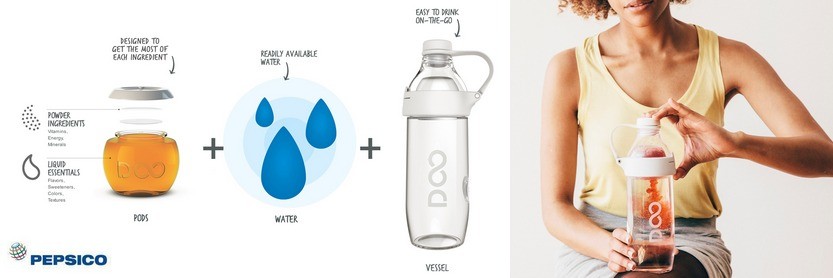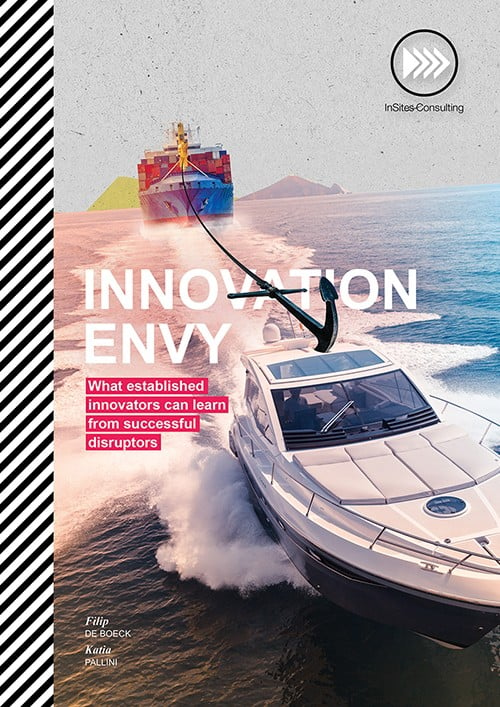In our Innovation series, we aim to unpack Innovation’s DNA characteristics. We started with Friction and explored the role of Passion. We are now at the third and final characteristic: embracing a perpetual beta approach. In other words, adopting a Pilot mentality.
Dieter Deceuninck, Global Director Strategy & Insights for Waters and Aquadrinks at Danone, said it best: “When you launch it, it is not finished… that’s where it starts!”. One of the key characteristics of successful innovators is their ‘launch & learn’ attitude; they don’t consider the market launch as the finishing line., but rather as the start for optimizing and growing their product or service. They embrace this Pilot mentality, where they are courageous enough to trust their hunch, and launch their product in what could be an unfamiliar market.
Perfection
As we’ve noted in previous blog posts, many incumbents’ innovation roadmaps are mired by the traffic-light syndrome. They are also characterized by a validation overdrive to gain a level of certainty before market launch. But while we agree that innovation needs timely checks, you’ll never be able to remove all the risk. In fact, trying to do so is a risk in and of itself. Or as Winston Churchill said: “Perfection is the enemy of progress”.
For established innovators, piloting (or ‘launching & learning’) means not waiting for a final product to initiate market launch. Don’t think of market launching as the final stage of your innovation funnel. Rather think of it as the beginning of the optimization process! Rather than testing hypothetical paper concepts, solutions are tested amongst (a subset of) consumers. By launching a product in one particular market or pre-launching a product or service amongst beta testers before the full-market launch, you can unlock a wealth of intelligence to make your ultimate market launch infinitely more successful.
PepsiCo, for instance, recently embarked on a mission to craft an authentic drink that offers consumers more choices and empowers them to create their own experience. This resulted in a new product concept called Drinkfinity. This new drink contains no artificial flavors or sweeteners. So it is giving you the opportunity to create completely new enhanced beverages by mixing the Drinkfinity ingredients with water. The product comes with a water bottle and a variety of pods that are sealed until you pop the pod onto the vessel. PepsiCo beta-tested the concept among 3,000 of its own employees. Based on the learnings, the team could optimize the product accordingly, and fully launch it to the US market.

This pilot mentality comes with a fail forward mindset; you see market launch as an opportunity to learn, optimize or even kill a solution. It’s about detecting fast and acting faster. Consider Google for a minute, ranked in the top 10 (if not the top 5) by multiple rating agencies globally as one of the world’s most valuable, innovative and recognizable brands. Surprisingly though, if you visit https://killedbygoogle.com/, you’ll note Google killed more projects than it’s currently running. They would not have achieved such monolithic success if they feared failure.
With change being a constant, so comes the need to innovate. Innovation comes in many grades, shapes and sizes, yet one must not think it’s the sole privilege of small players and entrepreneurs. Many established players innovate successfully, yet robust organizational structures often challenge flexibility and agility. This leads to what we label ‘Innovation Envy’, where larger organizations envy the innovation fast tracks of disruptive newcomers.
What drives these successful entrepreneurs? What are the common denominators of their success? And what can we learn from them? These questions formed the starting point of our research. Analyzing a multitude of successful start-up innovations allowed us to identify three key characteristics present amongst successful newcomers, namely friction, passion and pilot mentality. To leverage the intrapreneurial attitude in the current organization reality, we believe established organizations can benefit from embedding these components in their innovation culture and routines.
Are you suffering from innovation envy? Do you wish to embed more friction, passion and pilot mentality in your innovation process? Download your free copy of our Innovation Envy bookzine or get in touch!






